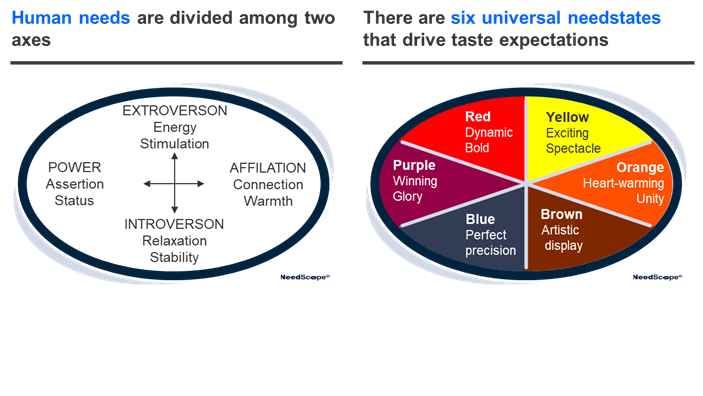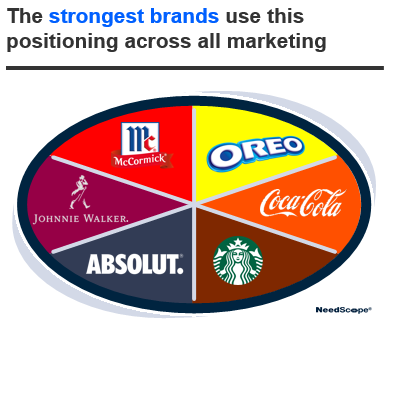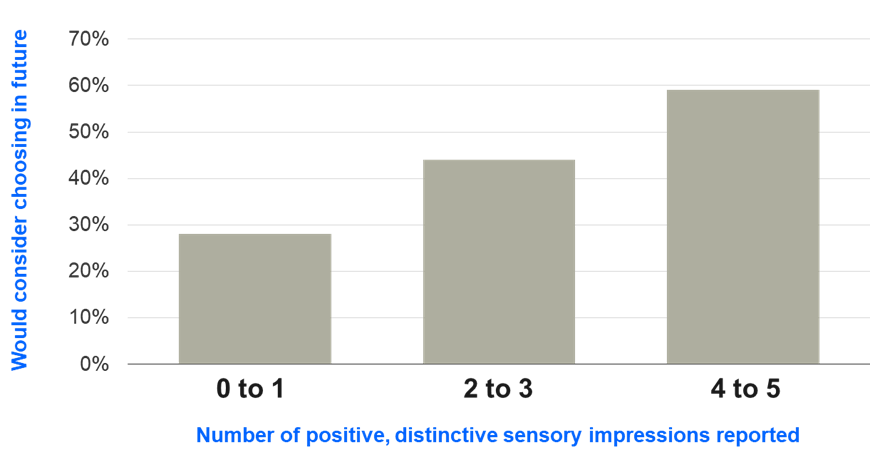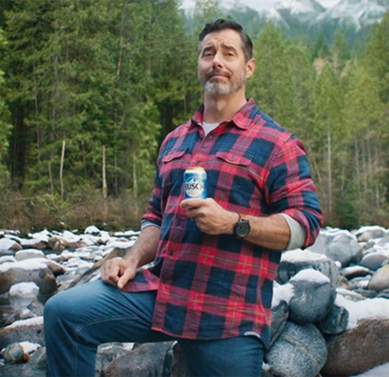The food and beverage industry, according to Kantar BrandZ, is the most resilient category in 2023, with the lowest year over year decrease in brand value compared to any category, only down 3% as a whole. While the Top 100 brands collectively declined 20% brand value in 2023, leading food and beverage brands like Coca-Cola, Pepsi, Red Bull, and Lays all experienced brand value growth.
Taste is the most important driver of brand equity in food and beverage, and thus a key contributor to this category resiliency. Taste is the top driver of both brand meaning – meeting needs, but also brand affinity – as well as brand differentiation. Even for health-forward food categories like meat-free protein, Taste is the clear top driver of brand predispositions.
Taste is also growing in importance. The rise of “treat culture” and snacking shows that people are more willing to indulge on products that taste great and bring pleasure. This is especially true of younger generations: 64% of Gen Z say, ‘the importance of treating myself is extremely or very important’.
So getting taste right is critical for all food and beverage brands. But is taste just the ingredients and flavor profile of your product? Kantar BrandZ data shows that Johnnie Walker, McCormick, Starbucks, and Coca-Cola all perform very well on taste. But what do these brands have in common in regards to taste? They are all quite different in sweetness, spice, texture, and temperature.
One of history’s most memorable marketing campaigns also shows that taste is more than just what is in the bag or bottle, although it didn’t benefit the brand behind the campaign. The Pepsi Challenge grabbed attention by showing everyday people (and celebrities) choosing Pepsi over Coke in blind taste tests. Even though Pepsi outperformed Coke on taste tests with food scientists, research showed that the Challenge failed to show a tangible sales impact for Pepsi.
Why was Pepsi’s strong proof point on taste not successful? Because great taste is driven by expectations – yes, the ingredients matter, but so do deep-seated emotions, associations, and brand promises built through great marketing.
Dopamine-driven expectations
Neuroscience tells us that dopamine – the pleasure neurotransmitter – spikes not during consumption, but in the moments expecting consumption. Great-tasting brands use all the tools at their disposal – packaging, innovations, advertising, brand experience – to communicate to the brain how the brand will uniquely meet needs in regards to taste.
To illustrate this, we can utilize the Kantar NeedScope model. Rooted in human psychology, NeedScope is a fantastic way to understand brands and categories. No matter the category– beverages, snacks, travel, music – our needs can be segmented by extroversion/introversion and power/affiliation (or individualism/collectivism).
From these axes come six universal needstates, each with unique functional, social, and emotional needs. Strong brands have a differentiated and cohesive footprint on the map – for example, the dynamic, energetic Red space – and ensure all brand assets align with that space.

Let’s see how 6 top-scoring brands on taste use this psychology to set consumer expectations:
- McCormick utilizes Red; they push how spices and sauces give your food a bold taste to stimulate your senses. They recently released ‘SnapTight’ lids on their packaging that audibly snap close to keep aroma locked in.
- Absolut utilizes Blue; the hall-of-fame “Absolut Perfection” campaign communicated how Absolut is almost scientifically perfect in taste.
- Coca-Cola – the brand of polar bears, movies, and ‘Open Happiness’: - utilizes Orange; The foundation of the brand is joy and an accessible taste that everyone can enjoy.
- Johnnie Walker utilizes Purple, promoting taste as a luxury ‘a masterful blend that is one of life’s true icons.’
- Oreo utilizes Yellow; their launch of bold limited-time flavors has maintained excitement and spectacle for a 113-year-old brand.
- Starbucks utilizes Brown; Brown is about artistic display, and every Starbucks store is designed to draw your attention to the craftedness of your beverage.

Now let’s explore further how neuroscience explains how our brains react to taste.
The Neuroscience of taste
Taste is a multi-sensory sensation. Our taste buds were known to detect only sweet, sour, salty, and bitter tastes. However, taste is not physiologically made up of sensations from taste buds only; it also relies heavily on input from other senses. All senses have a role in driving taste perception: Taste, Touch, Smell, Sight and Sound.
The more positive and distinctive sensory associations come to mind the more likely people are to consider the brand for purchase. Research conducted by Kantar in US, UK and Japan across 38 brands further confirmed these beliefs and found that the more positive and distinctive sensory impressions come to mind the more loyal people are to a brand.

But is this the chicken or the egg? The answer is both. People are not one-dimensional beings; we have five senses, and the better brands engage with all those senses the stronger the impression they will make. We cover a few to illustrate this example:
Smell: The primary accompanying sense for taste is olfaction, or how the food smells. Smell plays such an integral role in taste perception that, without it, it is difficult to distinguish a potato from an apple or wine from apple juice. Smell affects taste both before (orthonasal) and after (retronasal) food enters our mouth. Smell also affects memory and emotions because the olfactory Lobe is closely connected to the limbic system. The limbic system comprises a set of structures within the brain that are regarded by scientists as playing a major role in controlling mood, memory, behavior and emotion.
Visual appearance: The visual appearance of food contributes to a sense of taste perception in generating expectations and perceptions of flavor and can ultimately dominate gustatory cues altogether.
Sound: The sound the food makes when bitten plays a key role in taste perceptions for certain food items (e.g., potato chips, celery, crackers), affecting perceived freshness as well as perceived quality.
Examples of ads that leverage sensory cues
Busch leveraged various sensory cues to drive taste in their ‘What Beer is that’ campaign from 2017. The Busch Guy was introduced in 2017 in the brand’s first ever Super Bowl spot and continues to be the main character in all Busch ads. The ‘Busch Guy’ campaign won Bronze Lion Campaign Awards for ‘What Beer is That’, ‘Falconer,’ ‘Camo’ and ‘News.’

In this specific ad showing a humorous refreshment challenge, a man asks a blindfolded participant which beer sounds more refreshing upon opening. The first can is opened yielding no response. The second can, however, is opened letting out a "Busch" sound. The contestant believes the second definitely sounds more refreshing and demands to know what kind of beer it is. This creates an awkward silence before he's told its obviously Busch.

The campaign featured several common elements established through campaign consistency to support brand linkage and drive taste perception. The brand uses a mix of visual and sonic branding cues consistently over time to drive taste. The brand is integral to the ad and simply couldn’t happen without it. It’s all the guy on the left not knowing which beer makes a ‘Busch’ sound as it’s opened. Another element helping branding in this campaign is consistency. It is part of a broader ‘Busch Guy campaign’ which features several common elements; the outdoors, the two characters, the can opening moment and ‘sound of refreshment’ tagline. So, there are plenty of brand cues to reinforce the connection to the brand. Facial coding data reinforced these findings as people engaged with the sound of opening the can, the “busch” sound, the moment of silence between the two guys and the tagline.
Other ways of amplifying taste based on Neuroscience
Another way to improve taste perception is activating mirror neurons, observing the same action, such as grasping a cup, in different contexts elicits different levels of mirror neuron activity in one area of the brain that belongs to the mirror neuron system (right posterior inferior frontal gyrus). Brands can amplify the three stages of consumption to drive taste. Ads can promote the anticipation of consumption, actual consumption, and post satisfaction of consumption. Seen through dunking an Oreo in milk and breaking off a Kit Kat, some brands create and own a unique signature of consumption.
Explore BrandZ data for free
Discover your top brand eqity indicators in seconds with Kantar BrandSnapshot powered by BrandZ.


